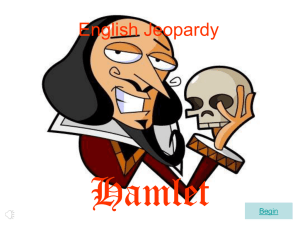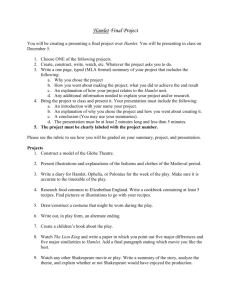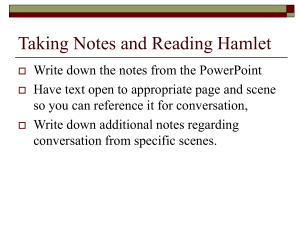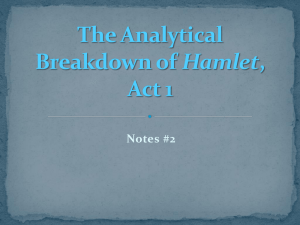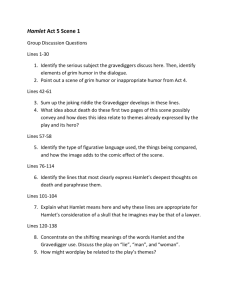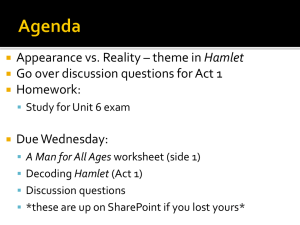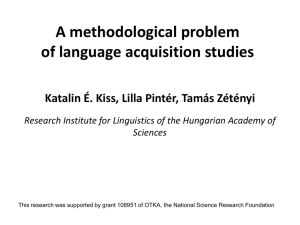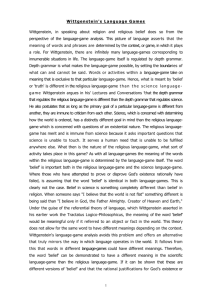HANDOUT to Dogg`s Hamlet
advertisement
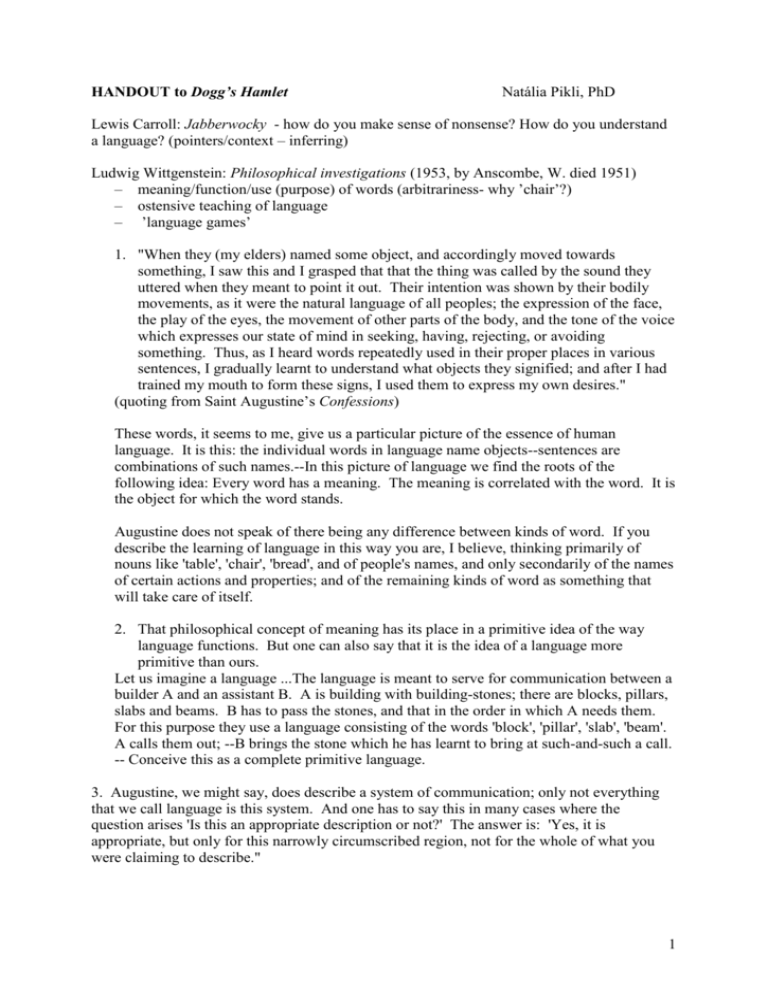
HANDOUT to Dogg’s Hamlet Natália Pikli, PhD Lewis Carroll: Jabberwocky - how do you make sense of nonsense? How do you understand a language? (pointers/context – inferring) Ludwig Wittgenstein: Philosophical investigations (1953, by Anscombe, W. died 1951) – meaning/function/use (purpose) of words (arbitrariness- why ’chair’?) – ostensive teaching of language – ’language games’ 1. "When they (my elders) named some object, and accordingly moved towards something, I saw this and I grasped that that the thing was called by the sound they uttered when they meant to point it out. Their intention was shown by their bodily movements, as it were the natural language of all peoples; the expression of the face, the play of the eyes, the movement of other parts of the body, and the tone of the voice which expresses our state of mind in seeking, having, rejecting, or avoiding something. Thus, as I heard words repeatedly used in their proper places in various sentences, I gradually learnt to understand what objects they signified; and after I had trained my mouth to form these signs, I used them to express my own desires." (quoting from Saint Augustine’s Confessions) These words, it seems to me, give us a particular picture of the essence of human language. It is this: the individual words in language name objects--sentences are combinations of such names.--In this picture of language we find the roots of the following idea: Every word has a meaning. The meaning is correlated with the word. It is the object for which the word stands. Augustine does not speak of there being any difference between kinds of word. If you describe the learning of language in this way you are, I believe, thinking primarily of nouns like 'table', 'chair', 'bread', and of people's names, and only secondarily of the names of certain actions and properties; and of the remaining kinds of word as something that will take care of itself. 2. That philosophical concept of meaning has its place in a primitive idea of the way language functions. But one can also say that it is the idea of a language more primitive than ours. Let us imagine a language ...The language is meant to serve for communication between a builder A and an assistant B. A is building with building-stones; there are blocks, pillars, slabs and beams. B has to pass the stones, and that in the order in which A needs them. For this purpose they use a language consisting of the words 'block', 'pillar', 'slab', 'beam'. A calls them out; --B brings the stone which he has learnt to bring at such-and-such a call. -- Conceive this as a complete primitive language. 3. Augustine, we might say, does describe a system of communication; only not everything that we call language is this system. And one has to say this in many cases where the question arises 'Is this an appropriate description or not?' The answer is: 'Yes, it is appropriate, but only for this narrowly circumscribed region, not for the whole of what you were claiming to describe." 1 It is as if someone were to say: "A game consists in moving objects about on a surface according to certain rules..." --and we replied: You seem to be thinking of board games, but there are others. You can make your definition correct by expressly restricting it to those games. 6. We could imagine that the language of (2) was the whole language of A and B; even the whole language of a tribe. The children are brought up to perform these actions, to use these words as they do so, and to react in this way to the words of others. An important part of the training will consist in the teacher's pointing to the objects, directing the child's attention to them, and at the same time uttering a word; for instance, the word "slab" as he points to that shape. ( I do not want to call this "ostensive definition", because the child cannot as yet ask what the name is. I will call it "ostensive teaching of words".-----I say that it will form an important part of the training, because it is so with human beings; not because it could not be imagine otherwise.) This ostensive teaching of words can be said to establish an association between the word and the thing. But what does this mean? Well, it can mean various things: but one very likely thinks first of all that a picture of the object comes before the child's mind when it hears the word. But now, if this does happen---is it the purpose of the word? 7. In the practice of the use of language one party calls out the words, the other acts on them. In instruction in the language the following process will occur: the learner names the objects; that is, he utters the word when the teacher points to the stone.--And there will be this still simpler exercise: the pupil repeats the words after the teacher-----both of these being processes resembling language. We can also think of the whole process of using words in as one of those games by means of which children learn their native language. I will call these games "language-games" and will sometimes speak of a primitive language as a language-game And the processes of naming the stones and of repeating words after someone might also be called language-games. Think of much of the use words in games like ring-a-ring-aroses. I shall also call the whole, consisting of language and the actions into which it is woven, the "language-game". Dogg’s Hamlet Ed Berman’s Dogg’s Troupe of Inter-Action (15-min Hamlet on a doubledecker) Dogg, R.L. – doggerel; Dog Latin, ’language gone wrong’ - teaching language – to Easy – to the audience (an alphabet… ABCDEF) – how? - ’building blocks of language’ – actual blocks with letters - How many nonsensical languages? (Dogg’s, English, Latin, Sh’s Elizabethan) - games and rules (examples!) - farce: running around, violence, repetition, talking and acting at cross-purposes, misunderstandings, insults - ’Hamlet condensed’ – what remains /what is missing? – farcical props - Hamlet as a game with rules – who understands the encore? 2


